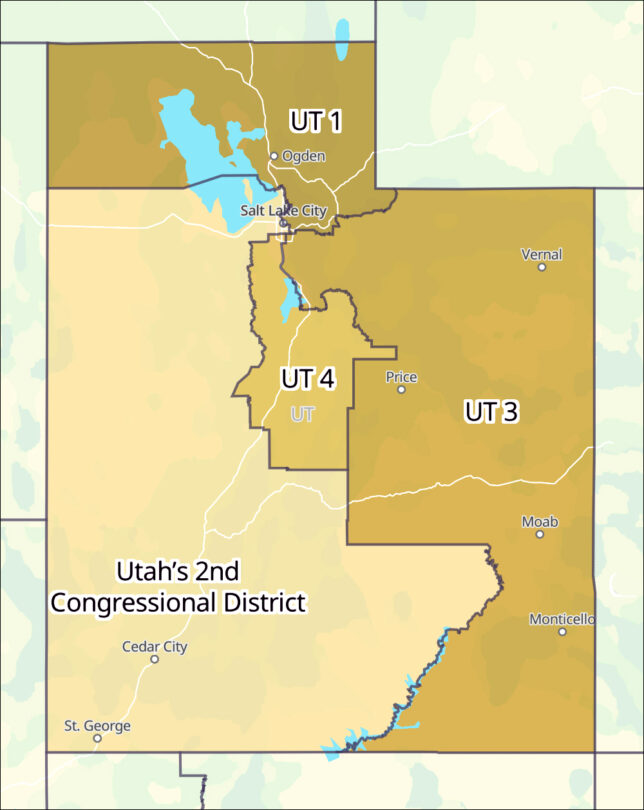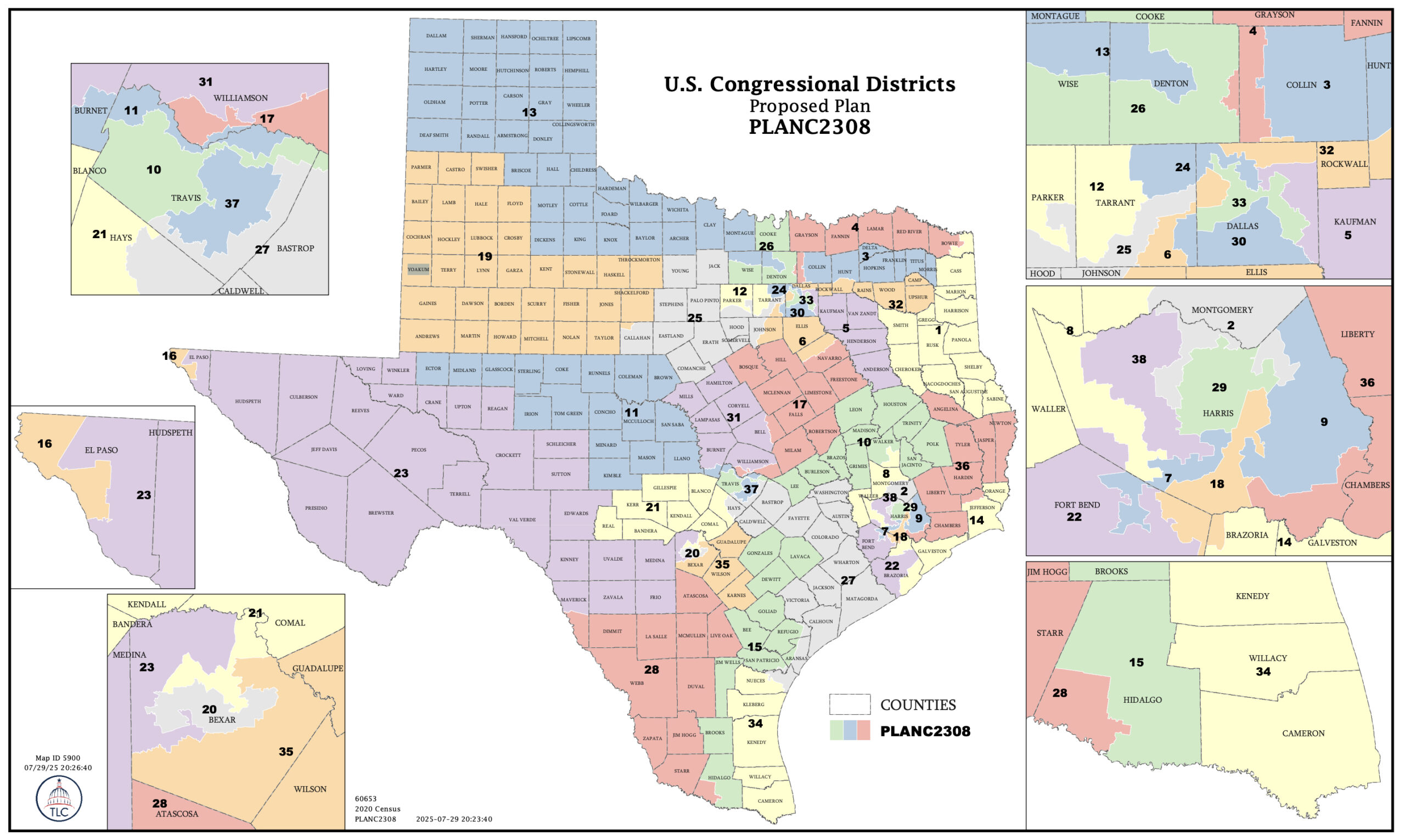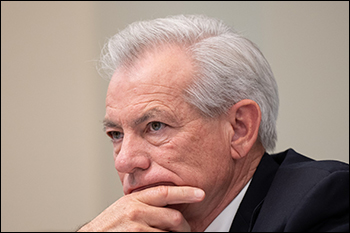By Jim Ellis — Friday, Aug. 29, 2025
Redistricting
A new court decision has thrust another state to the forefront of the mid-decade redistricting battle that may be developing in as many as 11 states.A Utah judge early this week issued a ruling that strikes down the state’s 4R-0D congressional map, saying the legislature did not have the right to usurp the citizens’ redistricting commission that voters approved via ballot proposition in 2018. The commission members crafted a congressional map in 2021 that the state legislature rejected and replaced with the current plan.
The ruling is curious in that the judge stated the Utah Constitution makes a vote of the people equal to that of a legislative action. Therefore, District Court Judge Dianna Gibson ruled that the legislature did not have the authority to change the Commission map but did not explain why the people’s vote then trumps legislative power if both are equal. Republicans will appeal to the State Supreme Court, though the high court previously allowed the original lawsuit to continue that resulted in Judge Gibson’s ruling.
The Commission map would likely cost the Republicans one seat since it created a Salt Lake City-anchored district that would presumably elect a Democrat. Like many redistricting battles, this one, too, has the potential of making its way to the US Supreme Court for a final decision.
Currently before the federal high court remains the Louisiana racial redistricting case. A ruling was expected before the end of June, but the justices instead postponed their decision and ordered additional oral arguments, now scheduled for Oct. 15. The court’s ultimate ruling could mean a Louisiana redraw before the 2026 election. If so, Alabama could also see a redraw since their redistricting situation is virtually identical to that of Louisiana.
The just-enacted Texas map already faces a racial gerrymandering lawsuit, this in an El Paso federal court. The Louisiana ruling could affect the new Texas map since the lawsuit grounds involve an alleged violation of the Voting Rights Act.
When the Ohio legislature returns to session in September after the summer break, a new congressional map will be drawn. Since the current plan, adopted in 2021, failed to pass the legislature with at least a three-fifths vote in each chamber, the map could only stand for two elections. Therefore, state law demands a new plan be crafted for the 2026 election and beyond.
Published reports indicate that redistricting is also being considered in Florida, Indiana, Maryland, Missouri, and New York. The referendum in California to usurp the citizens’ commission map and replace it with a published alternative will go to the voters in a Nov. 4 special election.
The Florida House Speaker has assembled a new redistricting committee, and Gov. Ron DeSantis indicates he favors attempting to draw a new map. Some believe the already strong Republican Florida map could yield two more seats.
Talks are underway in Indiana about undertaking redistricting. The GOP target here would be the state’s 1st District that Rep. Frank Mrvan (D-Highland/Gary) represents. In the past two elections, the Congressman recorded a pair of 53 percent victories.
Talk surfaced in Maryland, largely stemming from Gov. Wes Moore (D), that this state could attempt to eliminate the lone Republican district, but nothing concrete toward that end has yet happened.
Republicans are also making progress toward gaining the Kansas City-area district of Rep. Emanuel Cleaver (D); moving forward in this situation appears likely.
Finally, New York Gov. Kathy Hochul (D) also made public statements about redistricting retribution. Here too, however, a citizens’ commission is involved in the process. In 2021, even a Democratic court rejected the Democratic legislature’s map after the members found a way to usurp the commission plan. In the legislature’s map, the Republicans would have been relegated to four of 26 seats, which the court rejected.
While the Democrats could gain further seats in New York, the process of changing the current map may be too complicated to do so before the 2026 election.
As one can see, redistricting is a complex issue, and predicting what may happen next in any state’s process is always a difficult proposition.






